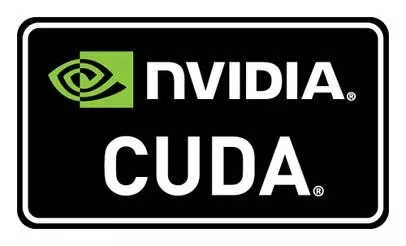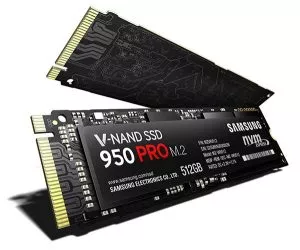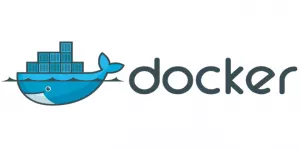The past year was full of new products, exciting technology and innovation. New and old players competed for our attention, while opening new markets and disrupting old ones. It was not easy to read a trade magazine or blog article that did not tout machine learning, cloud computing or crypto-currency as those three topics dominated the headlines.
But there was more to 2017. Intel, Microsoft, AMD, NVIDIA, and others released products that cemented their status in mature markets. We often herald new products while overlooking the work major market players made during the year. This year, we had a nice mix of both newcomer and incumbent product releases.
Let us look at some of the technology and products that made the biggest splash this past year.  CUDA competes with several similar “open” technologies such as OpenCL and OpenACC. The major neural networking and deep learning packages have added CUDA support. The same goes for the major cloud vendors, which have announced or released support for compute instances that include NVIDIA GPUs.
CUDA competes with several similar “open” technologies such as OpenCL and OpenACC. The major neural networking and deep learning packages have added CUDA support. The same goes for the major cloud vendors, which have announced or released support for compute instances that include NVIDIA GPUs.  That changes with the M.2, as it increases bandwidth from around 600MB/S to 2.0GB/S using two PCI-Express lanes and 4.0GB/S using four lanes. The next version of PCI-Express will double these speeds making M.2 drives as fast as system RAM.
M.2 storage is about the same size as a stick of RAM, making it easier to fit more storage into a small chassis. Cooling these hot-running sticks of speedy storage continues to be a challenge, but it M.2 technology will likely remain an important player in this developing market.
That changes with the M.2, as it increases bandwidth from around 600MB/S to 2.0GB/S using two PCI-Express lanes and 4.0GB/S using four lanes. The next version of PCI-Express will double these speeds making M.2 drives as fast as system RAM.
M.2 storage is about the same size as a stick of RAM, making it easier to fit more storage into a small chassis. Cooling these hot-running sticks of speedy storage continues to be a challenge, but it M.2 technology will likely remain an important player in this developing market.  Containers have soared in popularity because they allow developers to package up an application with all its libraries and dependencies and ship it in one package. That package can then run on any Linux machine regardless of customized settings in much the same way a virtual machine works.
Another reason for Docker’s popularity is its open-source origins. Many individuals and companies have contributed code along with additional features they need, and everyone benefits. It is one of the few tools that benefits system administrators as much as developers.
Containers have soared in popularity because they allow developers to package up an application with all its libraries and dependencies and ship it in one package. That package can then run on any Linux machine regardless of customized settings in much the same way a virtual machine works.
Another reason for Docker’s popularity is its open-source origins. Many individuals and companies have contributed code along with additional features they need, and everyone benefits. It is one of the few tools that benefits system administrators as much as developers.
NVIDIA CUDA (Computer Unified Device Architecture)
Deep learning really took off this year. The company driving us into machine learning, deep learning, and AI along with one of the biggest benefactors is NVIDIA and their proprietary platform and API: CUDA. NVIDIA has long created some of the best 3D accelerated cards under their GeForce brand and has lately dominated the gaming and enthusiast space with cards that provide a higher performance-per-watt than competing cards from AMD.
Amazon Alexa
Companies have tried for years to get consumers to control and navigate their devices using voice command, but these efforts really took off once Amazon released Alexa. Amazon was smart to introduce their voice assistant into our lives through a small speaker that could announce the day’s weather, help us find a recipe or order more Tide detergent from – you guessed it – Amazon. All this is a prelude to more advanced skills that we can use perform today by using nothing but spoken commands. One of those areas is home automation, where Alexa has a big lead over competing products from Google and Microsoft. Amazon is banking on Alexa APIs, growth in IoT and AWS to help push it further into our lives. The Echo line of speakers is just the beginning. Watch this space!M.2 Solid State Drives
Storage technology is stable—if boring—because it does not see as many significant changes as GPUs or CPUs. But this year was different because M.2 SSDs took off in popularity. SSDs brought major performance improvements for read and write actions to workstations and servers when compared to mechanical drives. Unfortunately, their performance was limited by the SATA 3.0 standard found on every motherboard.
AMD Ryzen Threadripper CPUs
For the past decade, Intel has dominated the enthusiast, workstation, and server market for processors. While Intel makes excellent products, the lack of competition has allowed them to charge a premium for their high-core count CPUs. And then AMD came along and released Ryzen, which caught Intel off-guard. Overnight, customers had another choice for building high-end workstations and servers. AMD’s Threadripper line brought consumers a 16-core, 32-thread CPU at under $1,000. AMD has kept the pressure on Intel by offering chips that compete directly with Intel’s i9 and i7 Core line of processors. Intel has responded by releasing even more powerful CPUs, and this is exactly how consumers benefit from increased competition. Even if you prefer Intel processors, root for AMD to keep the pressure on - because we all benefit when companies compete for our business.Docker
Docker has been around for a while, but really took off in 2017. Docker is a tool designed to make it easier to create, deploy and run applications using containers.
Conclusion
2017 was an exciting year in technology. With so much momentum around cloud services, machine learning, and AI, expect 2018 to be another big year full of innovative products. One prediction: if one trend will continue, it is that companies are collecting so much data on their customers and products that storing, analyzing, and acting on that data is absolutely critical to their business and financial bottom line. In 2018, expect to see several new services that aid companies with this effort. Microsoft, Amazon, and Oracle all offer products that promise to help in this area, but most have been priced at the high-end of the market. If we’re reading the tea leafs right, this might change in 2018. We’re curious: what technology trends are you seeing and what your predictions for 2018?You May Also Like
- Uncategorized
5 Steps to Building an Effective Ransomware-Free Data Protection Strategy
July 5th, 2021 - Business Continuity Uncategorized
Arcserve & StorageCraft: The New Business Continuity Leader
February 24th, 2021